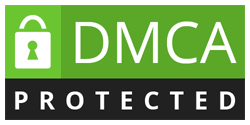Which of the following is the first step in developing a set of strategies designed to best meet the needs of customers?
Question 1
In which of the following stages is it determined what the project will entail, when it will be scheduled, whom it will benefit, and what the budget will be?
A. Conceptualizing
B. Defining
C. Planning
D. Executing
E. Delivering
Question 2
Which of the following is the first step in developing a set of strategies designed to best meet the needs of customers?
A. Market Research
B. Define the Integrated Project Management System
C. Environmental Analysis
D. Project Selection
E. All of the above are correct
Question 3
Which of the following activities is not considered a project?
A. Developing a new software program
B. Designing a space station
C. Preparing the site for the Olympic Games
D. Production of automobile tires
E. Developing a new advertising program
Question 4
Project management is ideally suited for a business environment requiring all of the following except
A. Accountability
B. Flexibility
C. Innovation
D. Speed
E. Repeatability
Question 5
Which of these is not part of the “technical dimension” of project management?
A. WBS
B. Budgets
C. Problem solving
D. Schedules
E. Status reports
Question 6
In which of the following stages is a major portion of the physical and mental project work performed?
A. Conceptualizing
B. Defining
C. Planning
D. Executing
E. Delivering
Question 7
Which of the following would not be classified as an organizational threat?
A. Slowing of the economy
B. A maturing life cycle
C. Poor product quality
D. Government regulations
E. All of these are organizational threats
Question 8
Which of the following is not one of the classifications for assessing a project portfolio?
A. Sacred cow
B. Bread-and-butter
C. Pearls
D. Oysters
E. White elephants
Question 9
Which of the follow is not one of the commonly heard comments of project managers?
A. Where did this project come from?
B. Why are we doing this project?
C. How can all these projects be first priority?
D. Why is this project so strongly linked to the strategic plan?
E. Where are we going to get the resources to do this project?
Question 10
Which of the following terms is often used to denote a project that a powerful, high-ranking official is advocating?
A. Sacred cow
B. Pet project
C. Political necessity
D. Special undertaking
E. Strategic ploy
Question 11
Projects are usually classified into all but one of the following categories. Which one is not one of the typical classifications?
A. Compliance and emergency
B. Operational
C. Strategic
D. Political necessity
E. All of these are typical classifications
Question 12
The assessment of the external and internal environments is called _______ analysis.
A. SWOT analysis
B. Competitive
C. Industry
D. Market
E. Strategic
Question 13
Which of the following cultural characteristics relates to the degree to which work activities are organized around groups rather than individuals?
A. Member identity
B. Team emphasis
C. Managerial focus
D. Unit integration
E. Control






